Posted on April 12th, 2020 by Mary Lord
 On April 3, U.S. health officials recommended an arts-and-crafts project to thwart the spread of coronavirus: Make a cloth face mask and wear it when you go out in public. Here are some tips and templates for turning T-shirts and other materials into DIY personal protective gear.
On April 3, U.S. health officials recommended an arts-and-crafts project to thwart the spread of coronavirus: Make a cloth face mask and wear it when you go out in public. Here are some tips and templates for turning T-shirts and other materials into DIY personal protective gear.
Read More
Filed under: Class Activities, Special Features, Web Resources | Comments Off on Face Mask Engineering
Tags: CDC, coronavirus, Covid-19 protective gear, Design, face mask, maker challenges, sewing, Web Resources
Posted on April 11th, 2020 by Mary Lord
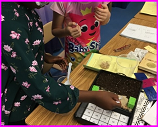 With schools closed during the Covid-19 pandemic, ASEE members and other engineering and technology educators are posting daily design challenges, hosting teacher meetups, and creating ways to engage students in STEM learning at home.
With schools closed during the Covid-19 pandemic, ASEE members and other engineering and technology educators are posting daily design challenges, hosting teacher meetups, and creating ways to engage students in STEM learning at home.
Read More
Filed under: Class Activities, Grades 6-8, Grades 6-8, Grades 9-12, Grades 9-12, Grades K-5, Grades K-5, K-12 Outreach Programs, Lesson Plans, Special Features, Web Resources | Comments Off on STEM @ Home Resources
Tags: American Society for Engineering Education, Class Activities, COVID-19, Curriculum, digital libraries, distance education, home schooling, Internet Resources, Lesson Plans, remote instruction, Resources for Teachers, STEM education, Web Resources
Posted on April 6th, 2020 by Mary Lord
 Middle school students measure how much dust, pollen, and other particulate matter is present in the air around them by placing “pollution detectors” in various locations and then examining the captured air particles to determine which places have more or fewer airborne particles. In a companion activity, they engineer methods of removing contaminants.
Middle school students measure how much dust, pollen, and other particulate matter is present in the air around them by placing “pollution detectors” in various locations and then examining the captured air particles to determine which places have more or fewer airborne particles. In a companion activity, they engineer methods of removing contaminants.
Read More
Filed under: Class Activities, Grades 6-8, Grades 6-8, Lesson Plans | Comments Off on I Breathe WHAT?!
Tags: air pollution, data, Environmental Engineering, investigation, measurement, NGSS aligned, pollen
Posted on March 4th, 2020 by Mary Lord
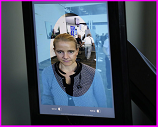 High school students analyze an assortment of popular inventions to determine their intended beneficiaries as well as who has access to, might be harmed by, and is profiting from them. They then develop and apply class standards for ethical design to re-imagine the devices in a way that would do more good for humanity.
High school students analyze an assortment of popular inventions to determine their intended beneficiaries as well as who has access to, might be harmed by, and is profiting from them. They then develop and apply class standards for ethical design to re-imagine the devices in a way that would do more good for humanity.
U.S. Customs and Border Protection photo of VeriScan facial recognition tablet at Dulles International airport by Glenn Fawcett
Read More
Filed under: Class Activities, Grades 9-12, Grades 9-12, Lesson Plans | Comments Off on Engineering Ethics: Evaluating Popular Inventions
Tags: Class Activities, design constraints, Drones, engineering ethics, genetic engineering, Grades 9-12, Lesson Plan, National Society of Professional Engineers, Presentations
Posted on March 4th, 2020 by Mary Lord
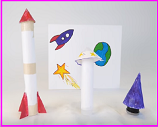 Elementary students discover the entire process that goes into designing rockets, including what real-world decisions engineers must make in such important areas as supplies, ethics, deadlines, and budgets. They also learn about the engineering design process and that the first design is almost never the final design.
Elementary students discover the entire process that goes into designing rockets, including what real-world decisions engineers must make in such important areas as supplies, ethics, deadlines, and budgets. They also learn about the engineering design process and that the first design is almost never the final design.
Read More
Filed under: Class Activities, Grades K-5, Grades K-5 | Comments Off on Learn to Build a Rocket in 5 Days or Your Money Back
Tags: aeronautical engineering, Class Activities, constraints, earth and space, engineering design proces, Grades K-5, Physical Science, rockets, trade-offs
Posted on February 6th, 2020 by Mary Lord
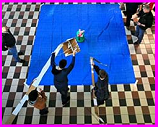 A classic engineering challenge involves designing and building devices that can deliver necessary goods to “Toxic Island,” an island that has been quarantined by the World Health Organization due to a nasty outbreak of disease. Working within specific constraints, including limited materials, middle school students follow the engineering design process to design, test, and improve a device that can deliver “medicine” and other vital supplies accurately and quickly without touching either the water or island.
A classic engineering challenge involves designing and building devices that can deliver necessary goods to “Toxic Island,” an island that has been quarantined by the World Health Organization due to a nasty outbreak of disease. Working within specific constraints, including limited materials, middle school students follow the engineering design process to design, test, and improve a device that can deliver “medicine” and other vital supplies accurately and quickly without touching either the water or island.
Read More
Filed under: Class Activities, Grades 9-12, Grades 9-12, Lesson Plans | Comments Off on Toxic Island: Design Devices to Deliver Goods
Tags: Biomedical Engineering, Class Activities, commerce, delivery, Design, engineering design challenge, Engineering Design Process, Grades 9-12, Lesson Plan, maker challenges, pandemic, public health
Posted on February 1st, 2020 by ASEE
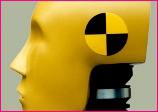 In this lesson from Newton’s Apple, students learn about the engineering behind air bags, including the concepts of momentum and force. They then conduct a related experiment, cushioning the “crash” of a raw egg.
In this lesson from Newton’s Apple, students learn about the engineering behind air bags, including the concepts of momentum and force. They then conduct a related experiment, cushioning the “crash” of a raw egg.
Read More
Filed under: Class Activities, Grades 6-8, Grades 9-12 | Comments Off on Activity: Airbags and Collisions
Tags: Automotive engineering, Class Activities, design constraints, Egg drop, Ethics in engineering, Grades 6-8, Grades 9-12, Safety engineering
Posted on December 17th, 2019 by Mary Lord
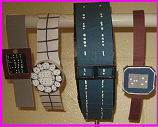 Students in grades 6 to 8 follow the engineering design process while combining mechanical engineering and bioengineering to create a new wristwatch face for a visually impaired student at their school. Teams present their designs to the class and construct prototypes of a watch face that doesn’t rely on sight to tell time.
Students in grades 6 to 8 follow the engineering design process while combining mechanical engineering and bioengineering to create a new wristwatch face for a visually impaired student at their school. Teams present their designs to the class and construct prototypes of a watch face that doesn’t rely on sight to tell time.
Read More
Filed under: Class Activities, Grades 6-8, Grades 6-8, Lesson Plans | Comments Off on Wristwatch Design for the Visually Impaired
Tags: accessibility, assistive devices, bioengineering, Class Activities, Engineering Design Process, Grades 6-8, Human-centered design, Lesson Plans, Mechanical engineering, NGSS aligned activity, teachengineering, visually impaired students, wristwatch
Posted on December 17th, 2019 by Mary Lord
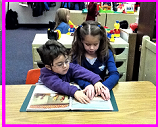 High school students practice human-centered design by imagining, designing, and prototyping a product to improve classroom accessibility for the visually impaired. The begin by wearing low-vision simulation goggles (or blindfolds) and walking with canes to navigate through a classroom in order to experience what it feels like to be visually impaired.
High school students practice human-centered design by imagining, designing, and prototyping a product to improve classroom accessibility for the visually impaired. The begin by wearing low-vision simulation goggles (or blindfolds) and walking with canes to navigate through a classroom in order to experience what it feels like to be visually impaired.
Read More
Filed under: Class Activities, Grades 9-12, Grades 9-12, Lesson Plans | Comments Off on Redesigning a Classroom for the Visually Impaired
Tags: accessibility, Class Activities, Engineering Design Process, Grades 9-12, Human-centered design, sight-impaired
 On April 3, U.S. health officials recommended an arts-and-crafts project to thwart the spread of coronavirus: Make a cloth face mask and wear it when you go out in public. Here are some tips and templates for turning T-shirts and other materials into DIY personal protective gear.
On April 3, U.S. health officials recommended an arts-and-crafts project to thwart the spread of coronavirus: Make a cloth face mask and wear it when you go out in public. Here are some tips and templates for turning T-shirts and other materials into DIY personal protective gear.








 With schools closed during the Covid-19 pandemic, ASEE members and other engineering and technology educators are posting daily design challenges, hosting teacher meetups, and creating ways to engage students in STEM learning at home.
With schools closed during the Covid-19 pandemic, ASEE members and other engineering and technology educators are posting daily design challenges, hosting teacher meetups, and creating ways to engage students in STEM learning at home. Middle school students measure how much dust, pollen, and other particulate matter is present in the air around them by placing “pollution detectors” in various locations and then examining the captured air particles to determine which places have more or fewer airborne particles. In a companion activity, they engineer methods of removing contaminants.
Middle school students measure how much dust, pollen, and other particulate matter is present in the air around them by placing “pollution detectors” in various locations and then examining the captured air particles to determine which places have more or fewer airborne particles. In a companion activity, they engineer methods of removing contaminants. High school students analyze an assortment of popular inventions to determine their intended beneficiaries as well as who has access to, might be harmed by, and is profiting from them. They then develop and apply class standards for ethical design to re-imagine the devices in a way that would do more good for humanity.
High school students analyze an assortment of popular inventions to determine their intended beneficiaries as well as who has access to, might be harmed by, and is profiting from them. They then develop and apply class standards for ethical design to re-imagine the devices in a way that would do more good for humanity. Elementary students discover the entire process that goes into designing rockets, including what real-world decisions engineers must make in such important areas as supplies, ethics, deadlines, and budgets. They also learn about the engineering design process and that the first design is almost never the final design.
Elementary students discover the entire process that goes into designing rockets, including what real-world decisions engineers must make in such important areas as supplies, ethics, deadlines, and budgets. They also learn about the engineering design process and that the first design is almost never the final design. A classic engineering challenge involves designing and building devices that can deliver necessary goods to “Toxic Island,” an island that has been quarantined by the World Health Organization due to a nasty outbreak of disease. Working within specific constraints, including limited materials, middle school students follow the engineering design process to design, test, and improve a device that can deliver “medicine” and other vital supplies accurately and quickly without touching either the water or island.
A classic engineering challenge involves designing and building devices that can deliver necessary goods to “Toxic Island,” an island that has been quarantined by the World Health Organization due to a nasty outbreak of disease. Working within specific constraints, including limited materials, middle school students follow the engineering design process to design, test, and improve a device that can deliver “medicine” and other vital supplies accurately and quickly without touching either the water or island. In this lesson from Newton’s Apple, students learn about the engineering behind air bags, including the concepts of momentum and force. They then conduct a related experiment, cushioning the “crash” of a raw egg.
In this lesson from Newton’s Apple, students learn about the engineering behind air bags, including the concepts of momentum and force. They then conduct a related experiment, cushioning the “crash” of a raw egg. Students in grades 6 to 8 follow the engineering design process while combining mechanical engineering and bioengineering to create a new wristwatch face for a visually impaired student at their school. Teams present their designs to the class and construct prototypes of a watch face that doesn’t rely on sight to tell time.
Students in grades 6 to 8 follow the engineering design process while combining mechanical engineering and bioengineering to create a new wristwatch face for a visually impaired student at their school. Teams present their designs to the class and construct prototypes of a watch face that doesn’t rely on sight to tell time. High school students practice human-centered design by imagining, designing, and prototyping a product to improve classroom accessibility for the visually impaired. The begin by wearing low-vision simulation goggles (or blindfolds) and walking with canes to navigate through a classroom in order to experience what it feels like to be visually impaired.
High school students practice human-centered design by imagining, designing, and prototyping a product to improve classroom accessibility for the visually impaired. The begin by wearing low-vision simulation goggles (or blindfolds) and walking with canes to navigate through a classroom in order to experience what it feels like to be visually impaired.